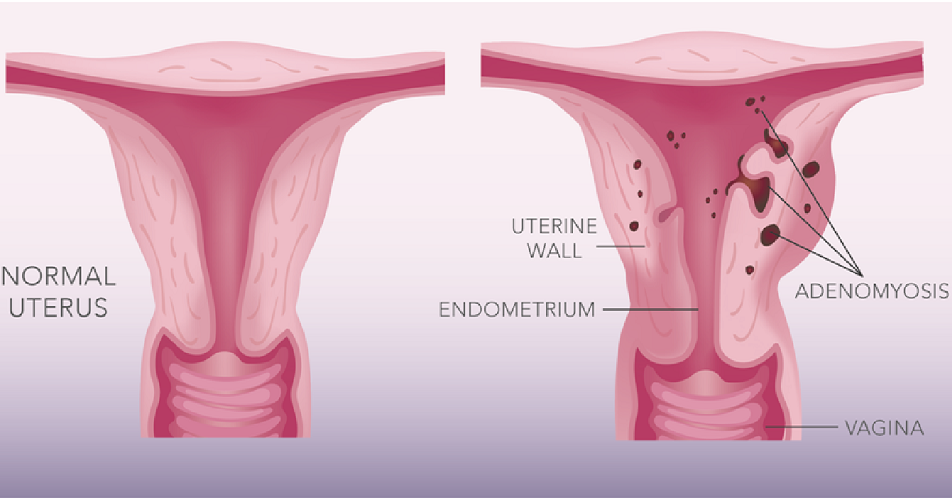Adenomyosis (ad-uh-no-my-O-sis) occurs when endometrial tissue, which normally lines the uterus, exists within and grows into the muscular wall of the uterus. The displaced endometrial tissue continues to act as it normally would — thickening, breaking down and bleeding — during each menstrual cycle. An enlarged uterus and painful, heavy periods can result.
Symptoms most often start late in the childbearing years after having children.
The cause of adenomyosis remains unknown, but the disease typically disappears after menopause. For women who experience severe discomfort from adenomyosis, certain treatments can help, but hysterectomy is the only cure.
Symptoms
Sometimes, adenomyosis is silent — causing no signs or symptoms — or only mildly uncomfortable. In other cases, adenomyosis may cause:
- Heavy or prolonged menstrual bleeding
- Severe cramping or sharp, knifelike pelvic pain during menstruation (dysmenorrhea)
- Menstrual cramps that last throughout your period and worsen as you get older
- Pain during intercourse
- Blood clots that pass during your period
Your uterus may get bigger. Although you might not know if your uterus is enlarged, you may notice that your lower abdomen seems bigger or feels tender.
Causes
The cause of adenomyosis isn't known. Expert theories about a possible cause include:
- Invasive tissue growth. Some experts believe that adenomyosis results from the direct invasion of endometrial cells from the lining of the uterus into the muscle that forms the uterine walls. Uterine incisions made during an operation such as a cesarean section (C-section) may promote the direct invasion of the endometrial cells into the wall of the uterus.
- Developmental origins. Other experts speculate that adenomyosis originates within the uterine muscle from endometrial tissue deposited there when the uterus first formed in the fetus.
- Uterine inflammation related to childbirth. Another theory suggests a link between adenomyosis and childbirth. An inflammation of the uterine lining during the postpartum period might cause a break in the normal boundary of cells that line the uterus. Surgical procedures on the uterus may have a similar effect.
- Stem cell origins. A recent theory proposes that bone marrow stem cells may invade the uterine muscle, causing adenomyosis.
Regardless of how adenomyosis develops, its growth depends on the circulating estrogen in a woman's body. When estrogen production decreases at menopause, adenomyosis eventually goes away.
